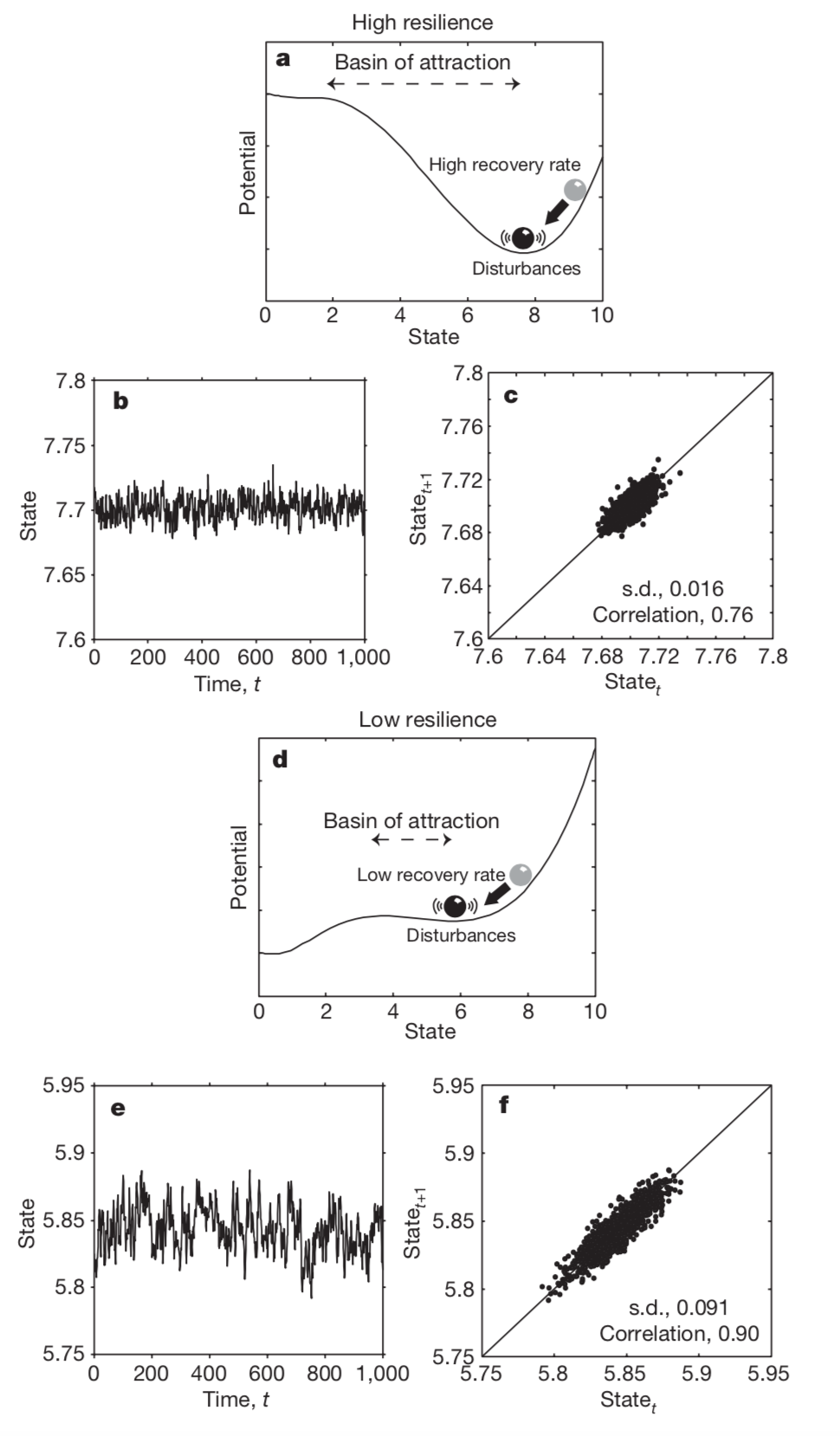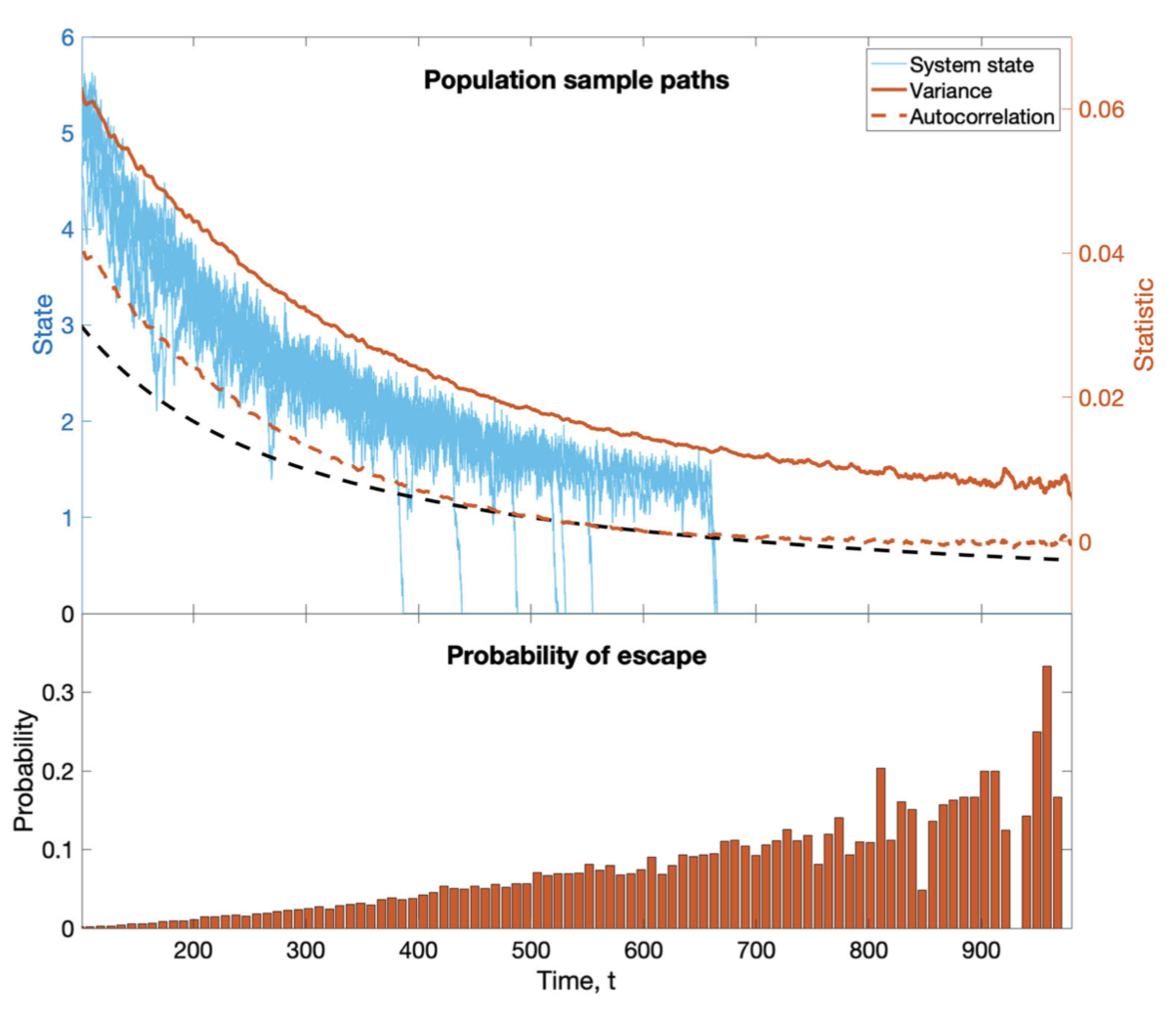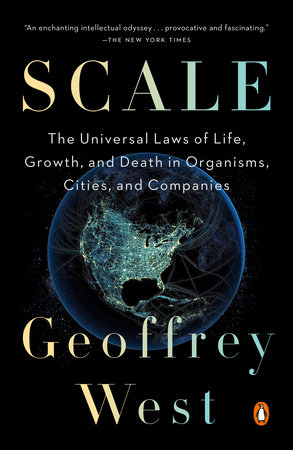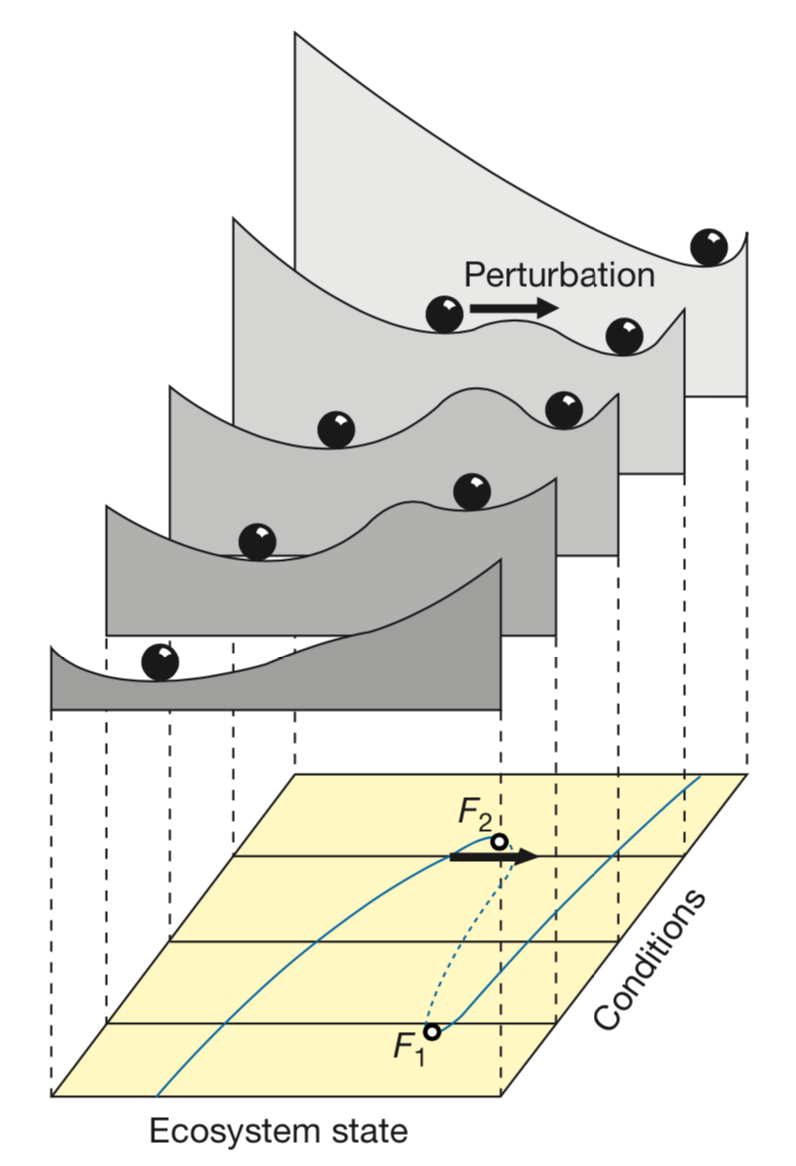
Detecting resilience loss in ecosystems



Outline
Jargon check: resilience & regime shifts [5]
Detecting resilience loss in global ecosystems [20]
How people behave when confronted with thresholds? [15]
resilience | rɪˈzɪlɪəns | (also resiliency)
noun [mass noun]
1 the capacity to recover quickly from difficulties; toughness: the often remarkable resilience of so many British institutions.
2 the ability of a substance or object to spring back into shape; elasticity: nylon is excellent in wearability, abrasion resistance and resilience.
Resilience
The capacity of any system to absorb disturbance and reorganise while undergoing change so as to still retain essentially the same function, structure, feedbacks, and therefore identity
Folke, C. 2016. “Resilience (Republished).” Ecology and Society doi:10.5751/ES-09088-210444.
Resilience
- Henri Poincaré discovered bifurcations in 1886
- Bifucations (non-linear dynamics) are foundational to studies across natural, social sciences and humanities.
E.g poverty traps, segregation, evolution of cooperation, cancer, language, finance, climate, the states of matter, among many others. - In 1960-70s ecology: related to the meaning of stability and catastrophe theory
(Lewontin, MacArthur, Holling, Ludwig, Walters, Noy-Meir, May)
Forest to savanna
Regime shifts are large, abrupt and persistence critical transitions in the function and structure of (eco)systems
Coral transitions
Regime shifts are large, abrupt and persistence critical transitions in the function and structure of (eco)systems
Fisheries collapse
Regime shifts are large, abrupt and persistence critical transitions in the function and structure of (eco)systems
Regime shifts and resilience
- Size of the basin of attraction
- Depth
- Slope
- Proximity to the boundary
- Property of the system or the regime (state variable)?
- Property of the disturbance?
- Resilience of what to what?
- How to identify good / enough observables?
Clark, W 1975 IIASA
Menck et al 2013 NatPhys
Carpenter et al 2001 Ecosystems
Why are regime shifts important?
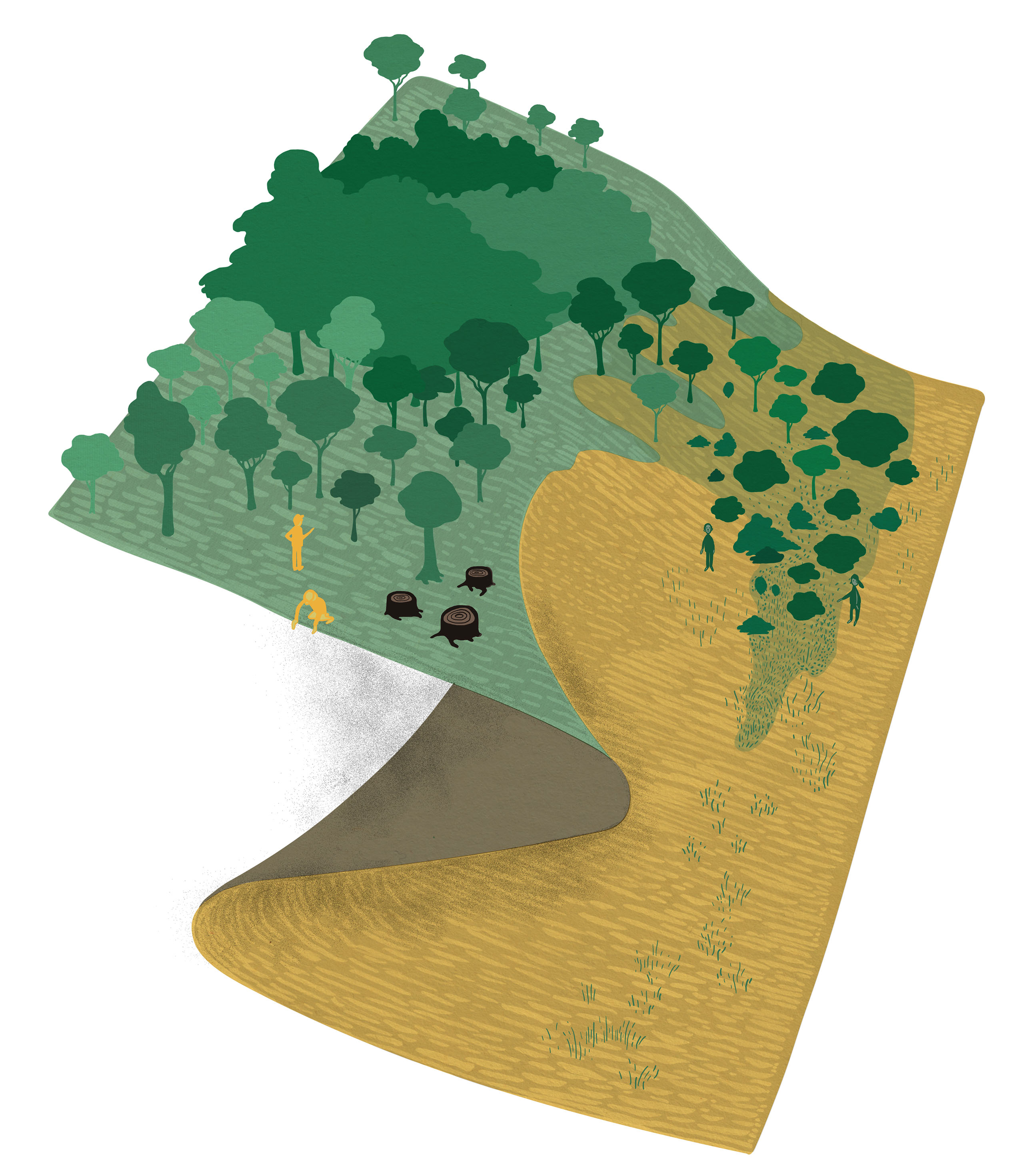
- Reduce the benefits people get from nature
- Difficult to anticipate and hard and costly to reverse
- Difficult (unethical) to perform experiments
- Often studied in isolation
- How do we compare them? Biggs et al 2018 EcolSoc
- What are their main drivers? Rocha et al 2015 PlosONE
- What are their main impacts? Rocha et al 2015 PhilTransB
- Can they be interconnected? Rocha et al 2018 Science
Where are regime shifts likely to happen?
Detecting resilience loss in ecosystems
Resilience indicators
- \(\uparrow\) Variance and autocorrelation
- \(\Delta\) skewness and kurtosis
- Model-based indicators:
- Diffusion jump models
- Time varying AR(p) models
- Threshold AR(p) models
- Potential analysis
- Spatial indicators:
- Fourier transforms
- Power spectrum
- Patch-size distributions
Critical slowing down
- Variance and autocorrelation
- NDVI: normalized difference vegetation index
- VOD: vegetation optical depth
- Limited spatial and temporal resolution
- Confirm a threshold: 1500mm
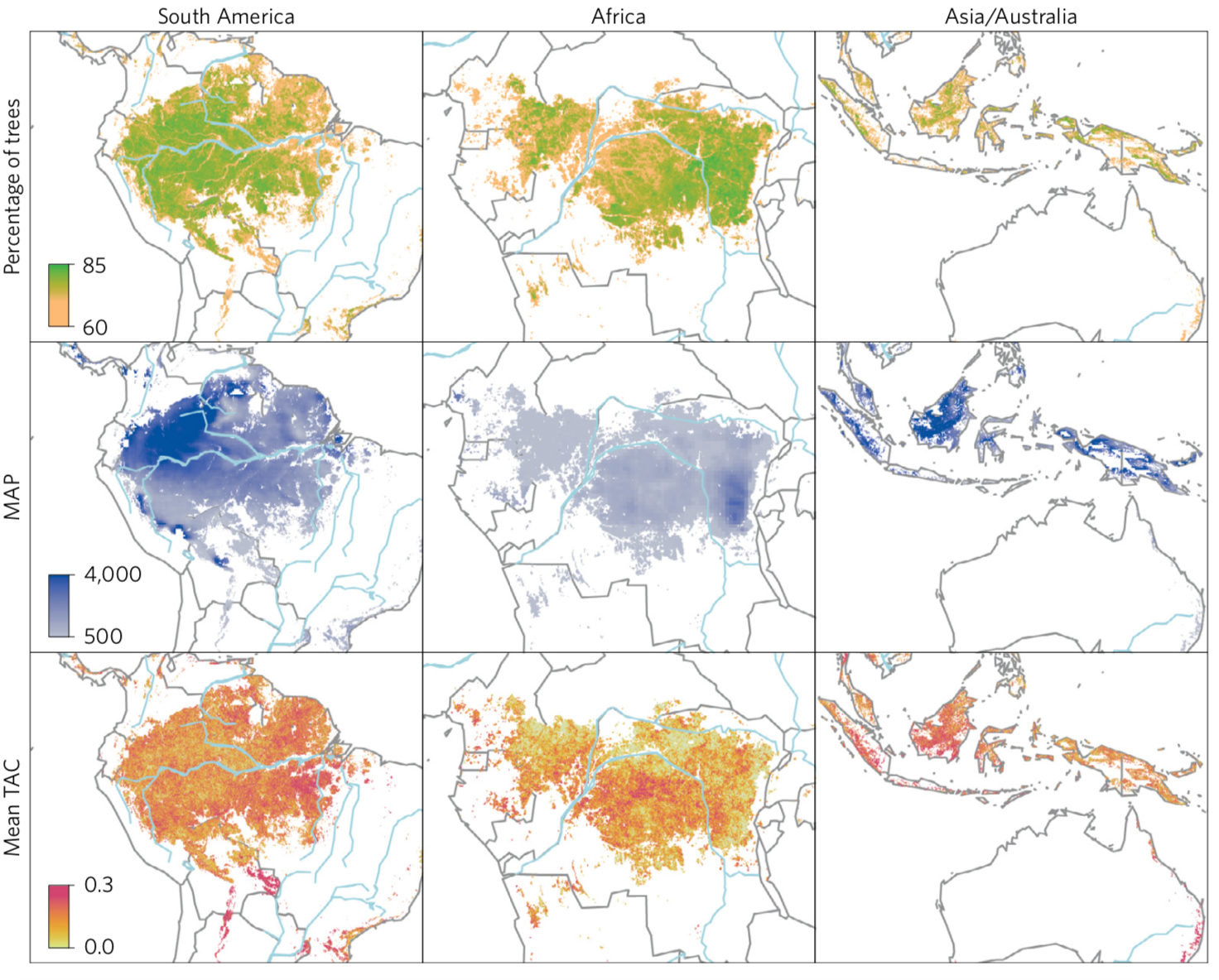
Verbesselt J, et al. Remotely sensed resilience of tropical forests. 2016.
Limitations: fail when dynamics are driven by stochastic processes or when signals have too much noise
Resilience indicators
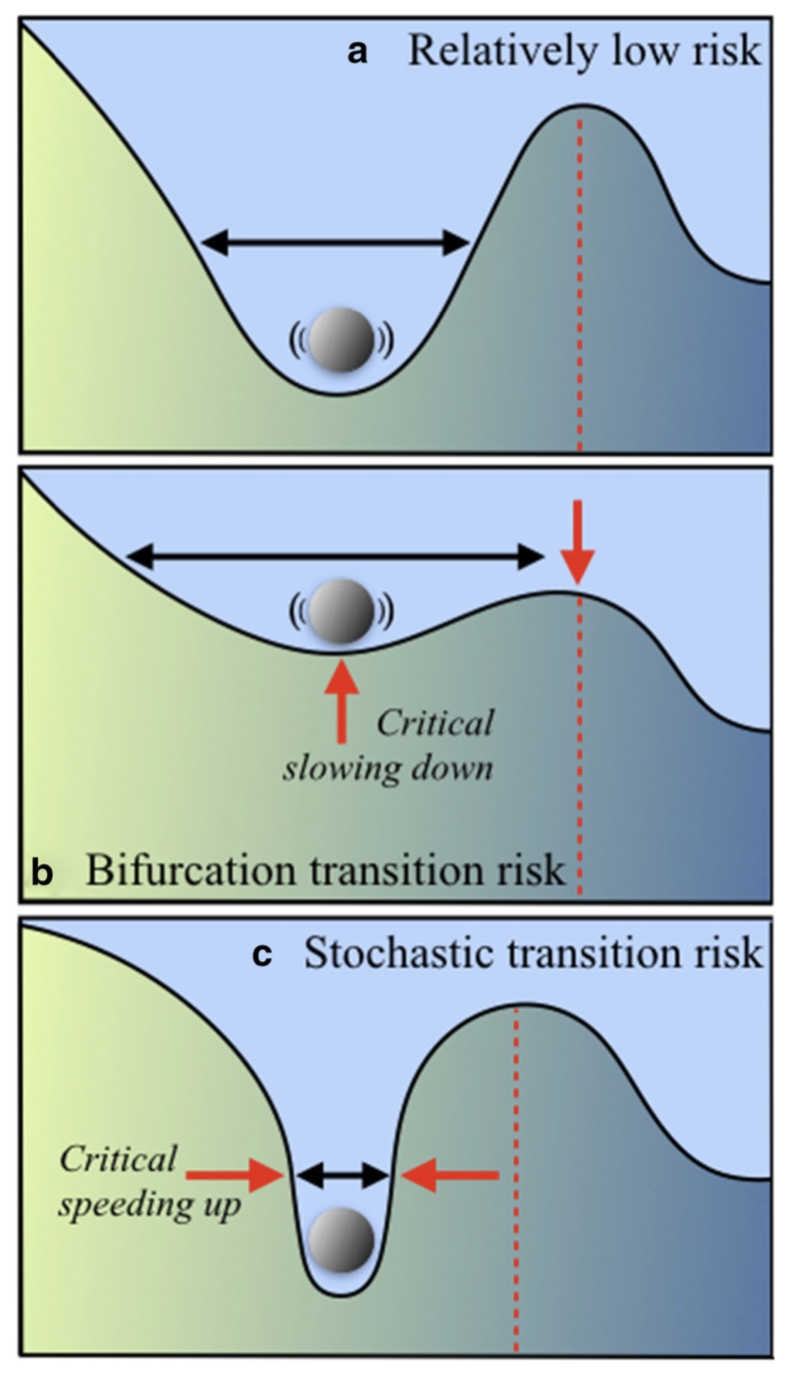
Resilience indicators
- \(\uparrow\) adaptive capacity
- Measure of self-similarity across scales
- Fractal geometry:
- Bounded
- Magnitudes do not depend on scale
- Clear interpretation
- Applications in medicine
West, Bruce. 2010. Frontiers Physiology
Gneiting et al. 2012. Statistical Science.
Data
- Imputed missing values (MSC)
- Fourier transform
- Trend
- Long-term variability
- Annual cycle
- Fast oscillations
- Normalized 0-mean 1-variance
- Unit root test & first-difference
- 50% window size
- Weekly obs, 0.25 degree grid (N = >1M pixels)
- Terrestrial:
- Gross primary productivity (2001:2018)
- Ecosystem respiration (2001:2018)
- Leaf area index (1994:2017)
- Marine:
- Chlorophyll A (1998:2018)
Analysis: one pixel
- Segmented regression
- Identifies a break point
- Because the time series is normalized, the slope on the base line should be close to zero.
- Slope2 after breaking point
- Davies test = whether slopes are significantly different
![]()
Muggeo VMR. Estimating regression models with unknown break-points. Stat Med. 2003;22(19):3055–71.
- Segmented regression
- Identifies a break point
- Because the time series is normalized, the slope on the base line should be close to zero.
- Slope2 after breaking point
- Davies test = whether slopes are significantly different
Muggeo VMR. Estimating regression models with unknown break-points. Stat Med. 2003;22(19):3055–71.
![]()
Gross primary productivity  Terrestrial ecosystem respiration
Terrestrial ecosystem respiration 
Gross primary productivity 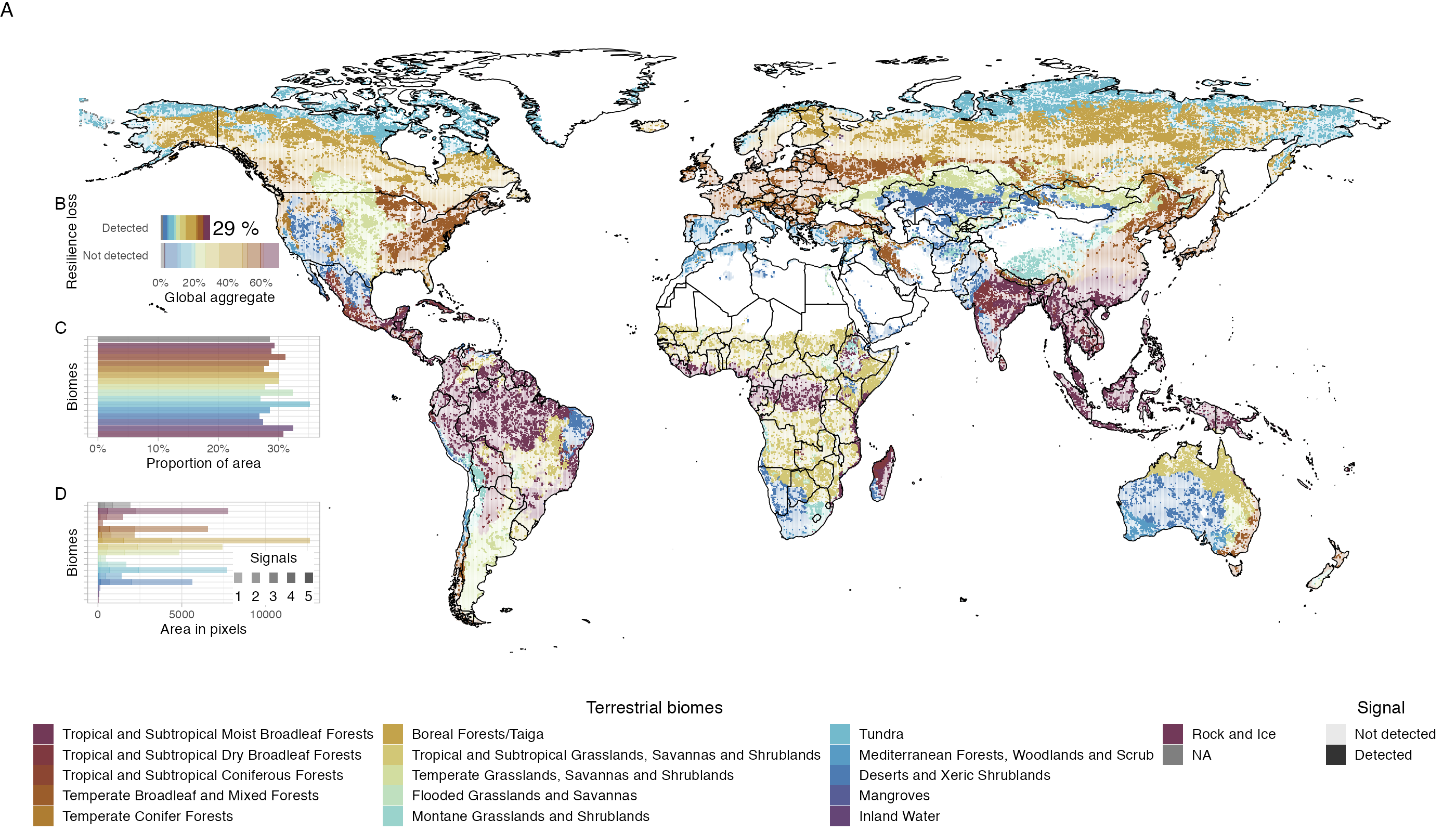
~30% of ecosystem show symptoms of resilience loss, boreal forest and tundra particularly strong signals
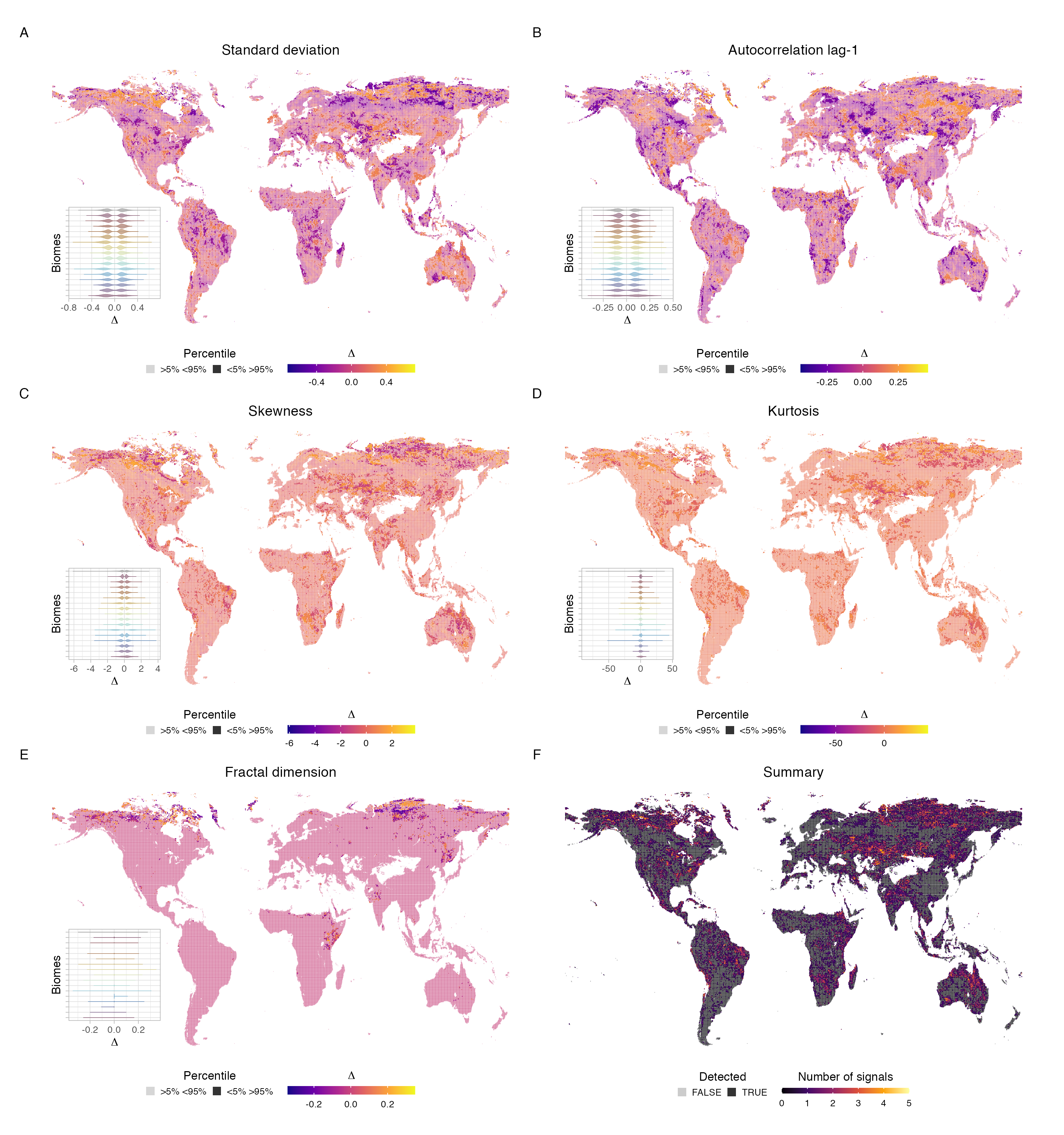
Terrestrial ecosystem respiration 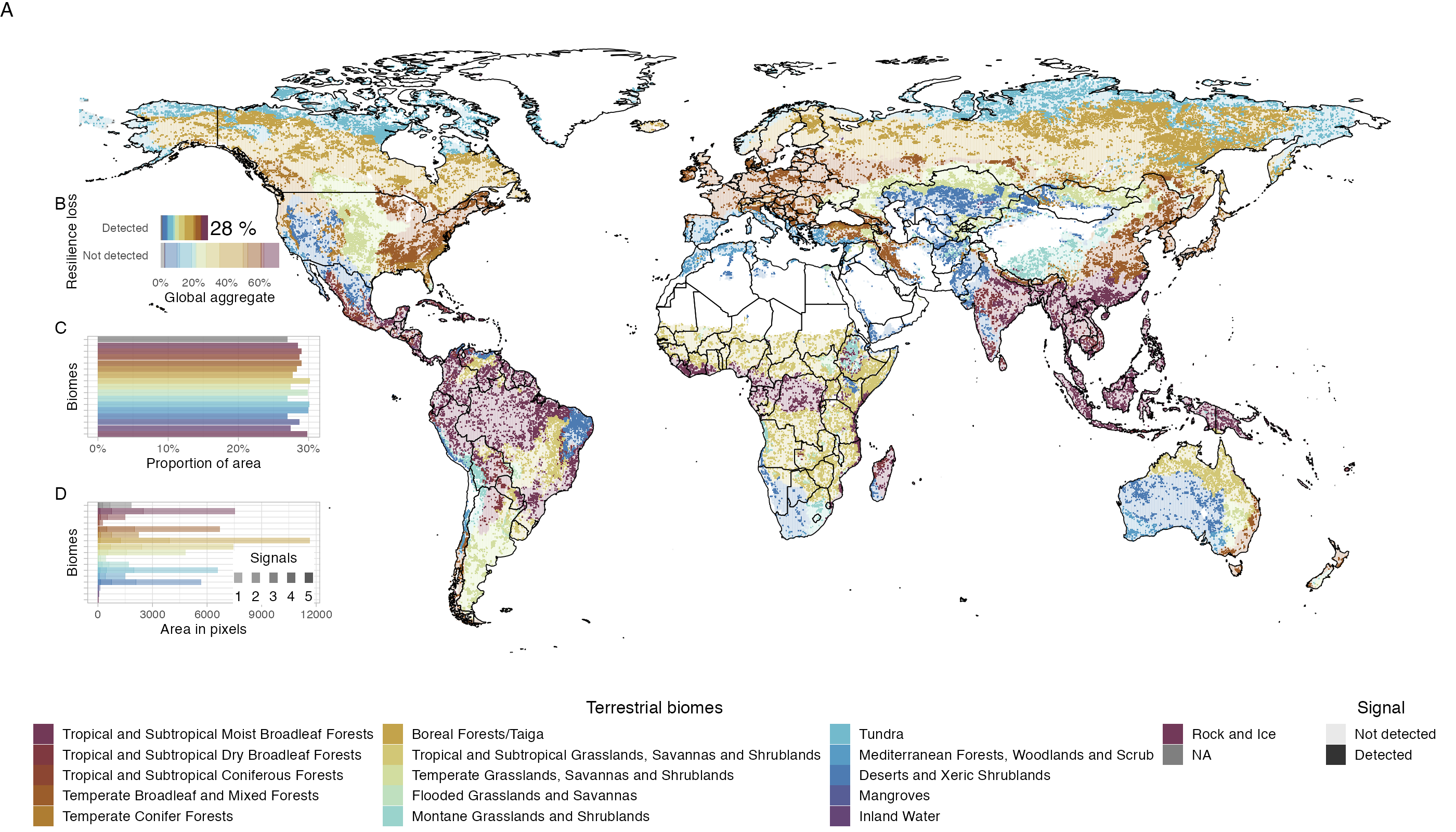
~30% of ecosystem show symptoms of resilience loss, boreal forest and tundra particularly strong signals
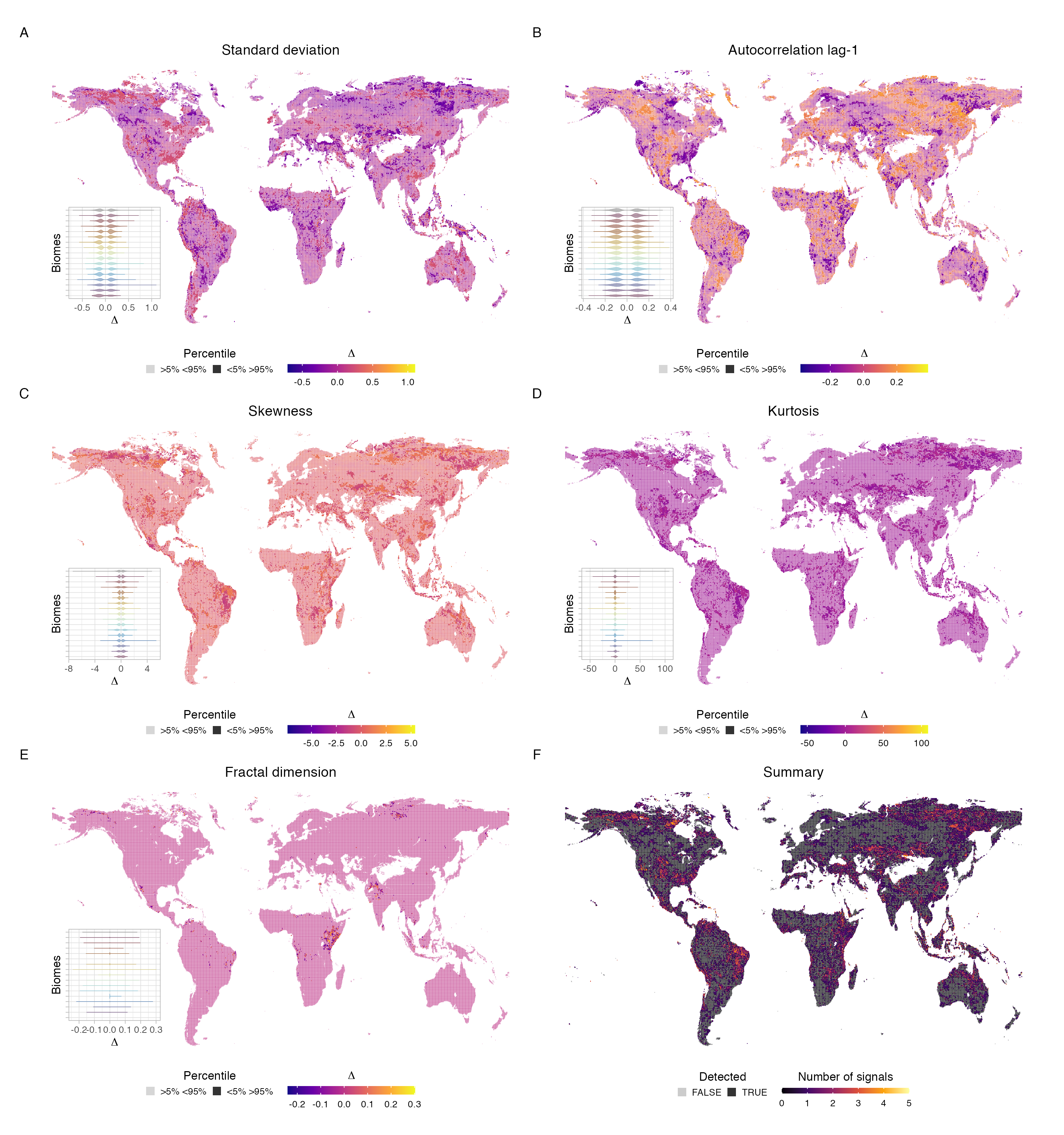
Chlorophyll A
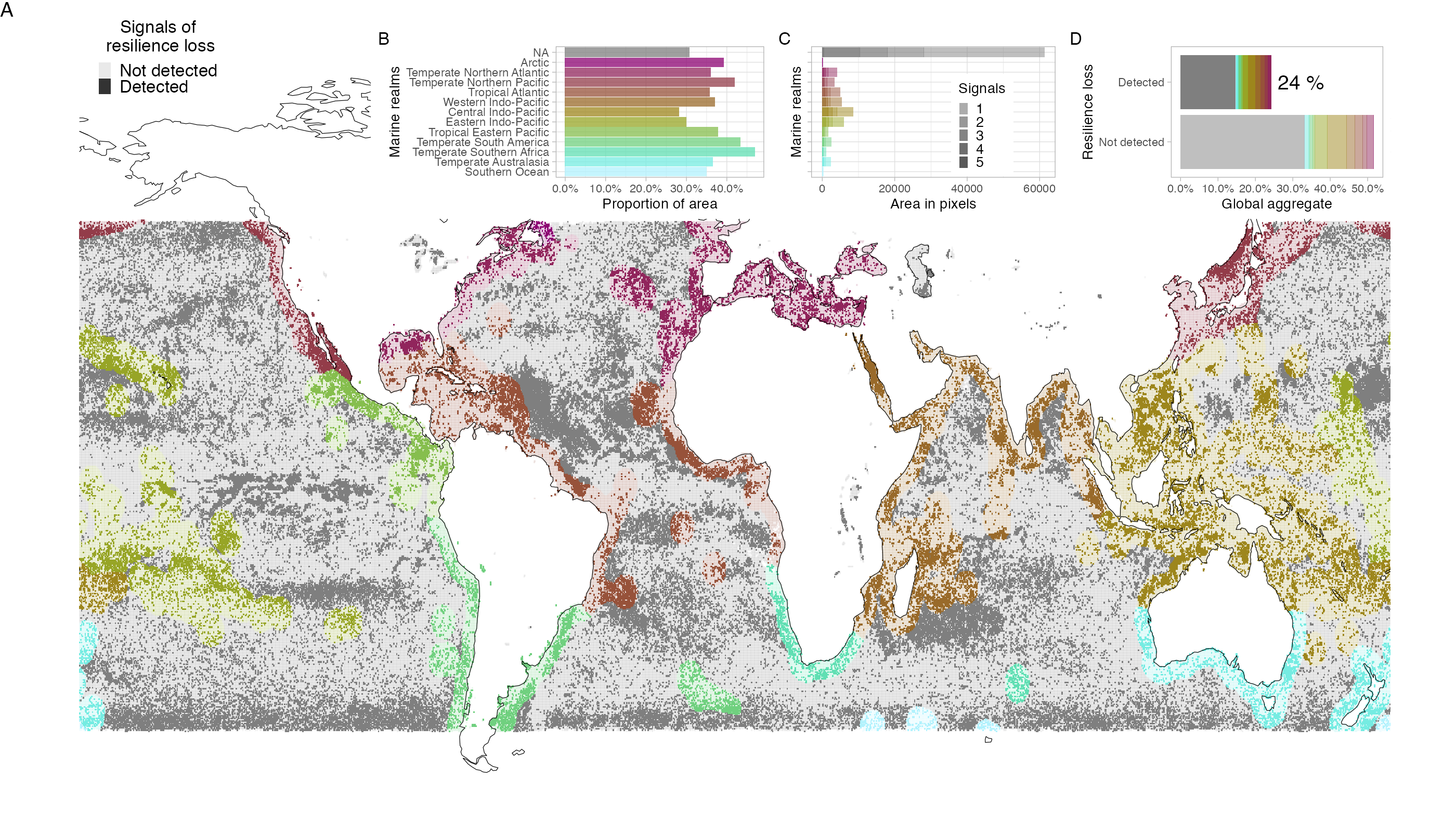
~25% of ecosystem show symptoms of resilience loss, Indo-Pacific oceans particularly strong signals
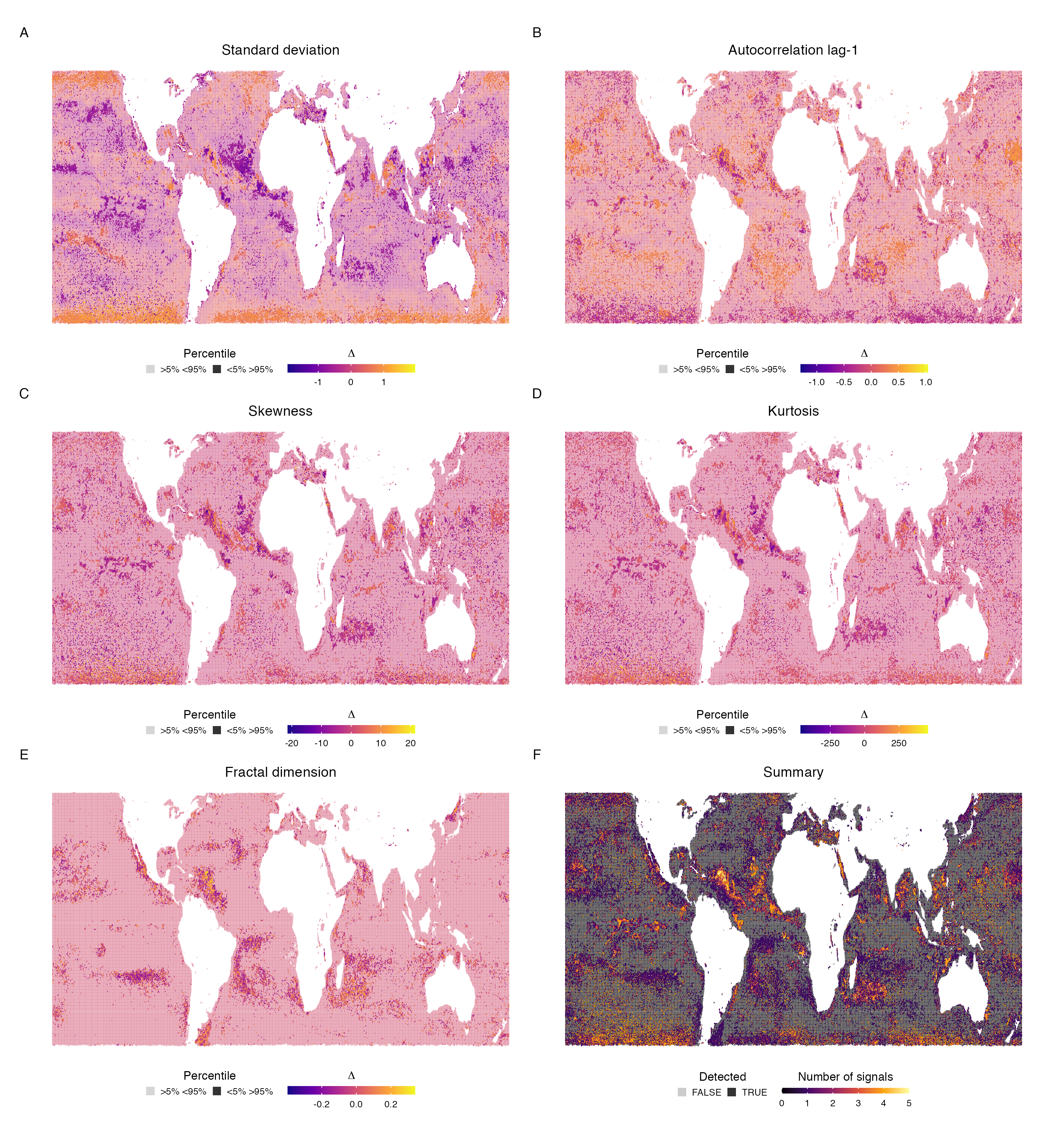
Break points not only cluster in space, also in time!
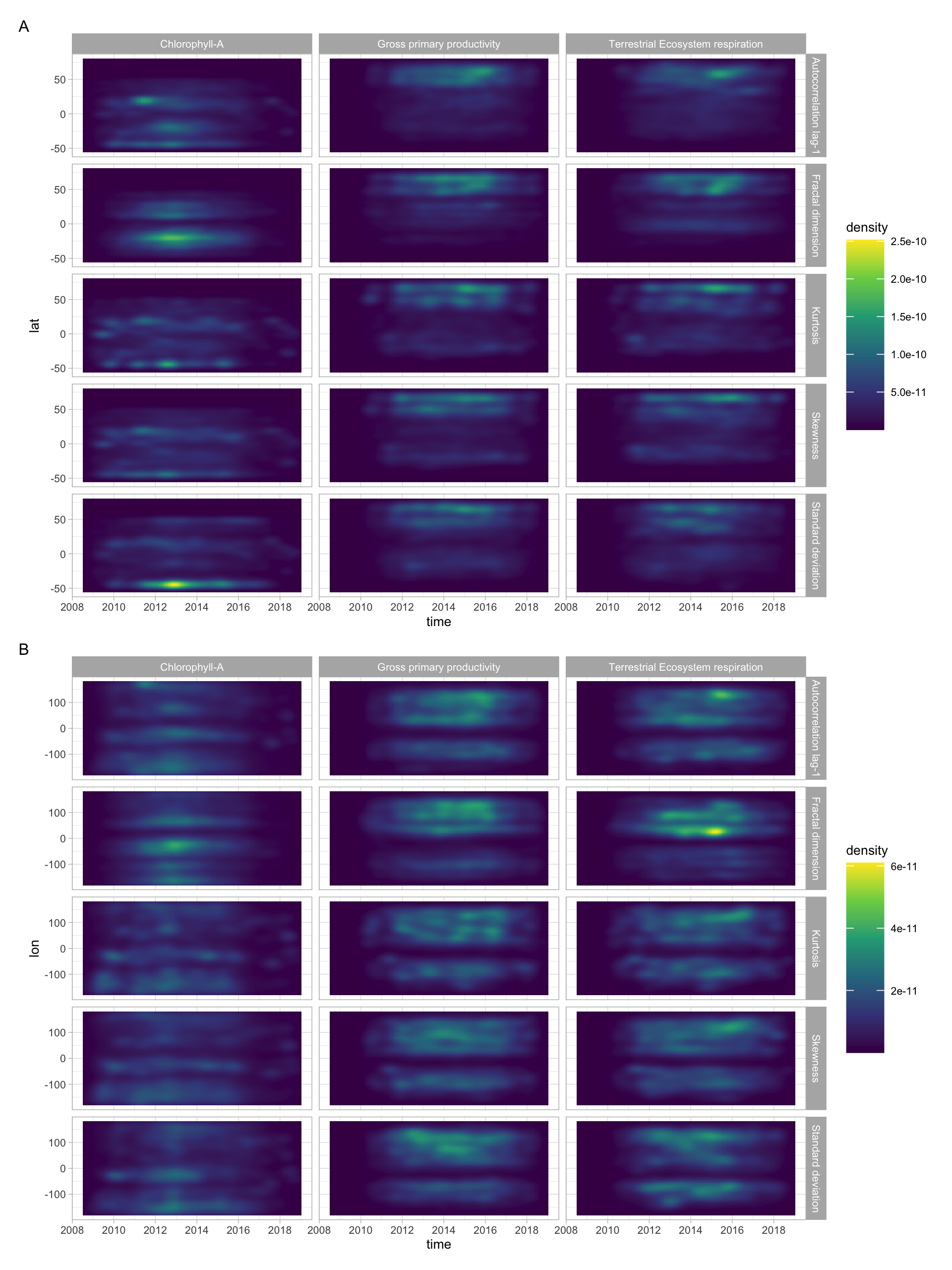
Is it critical slowing down, speeding up, or both?
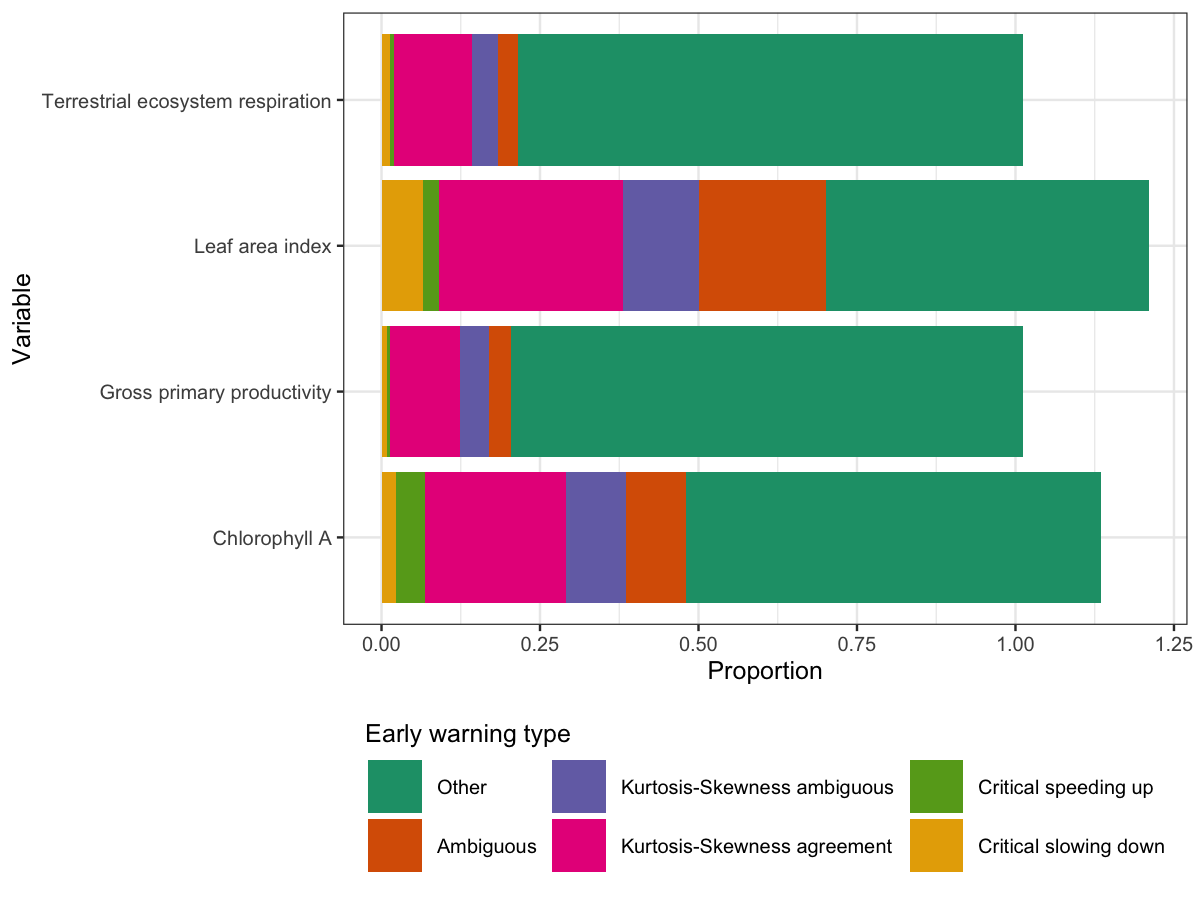
Next steps
- Minority of signals are coherent (CSD vs CSU)
- High agreement between kurtosis and skewness
- What is driving the signals?
- slow variables?
- stochasticity (var)?
- Be aware of limitations
- Not a prediction tool!
Get in touch!
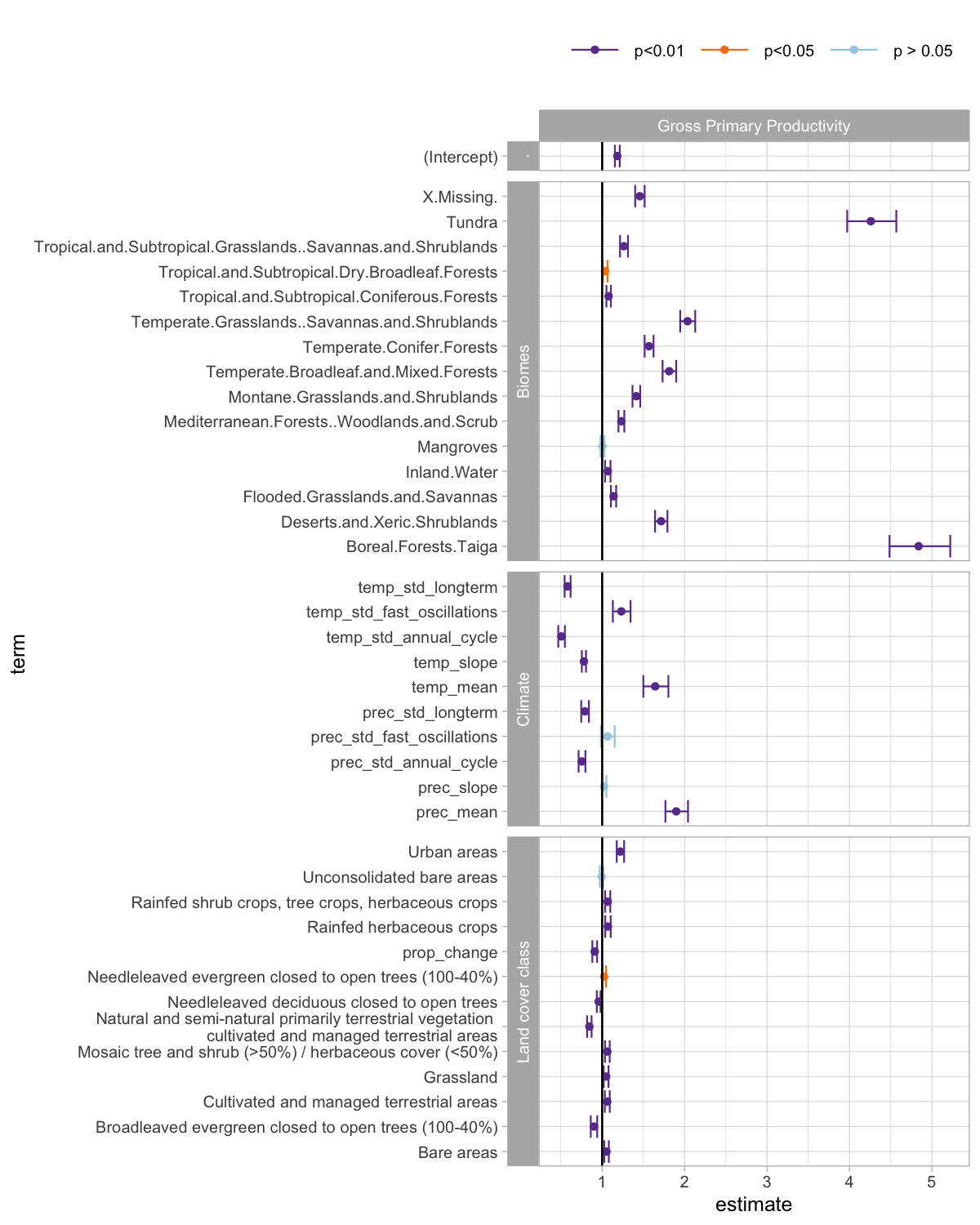
How do people behave when confronted with situations pervaded by thresholds?
- Regime shifts in marine environments
- Fisheries collapse
- Mangroves collapse
- Coral transitions
- Coastal eutrophication
- Hypoxia
- Potential impacts on society
- ~50M people depend on small-scale fisheries
- Mostly in developing countries
- Previous research:
- WEIRD people
- Lab experiments
- Predicts negative relationship between uncertainty and cooperation
- CPR games: static and dynamic games shows uncertainty \(\downarrow\) cooperation
- Public good games: threshold impact and location uncertainty \(\downarrow\) cooperation
Method: Framed field experiment
- 256 participants from 4 fishing communities
- Largely depend on natural resources as main source of income
- History of regime shifts:
- Mangroves collapse (1980s -90s)
- Hypoxia events and fish deadzones
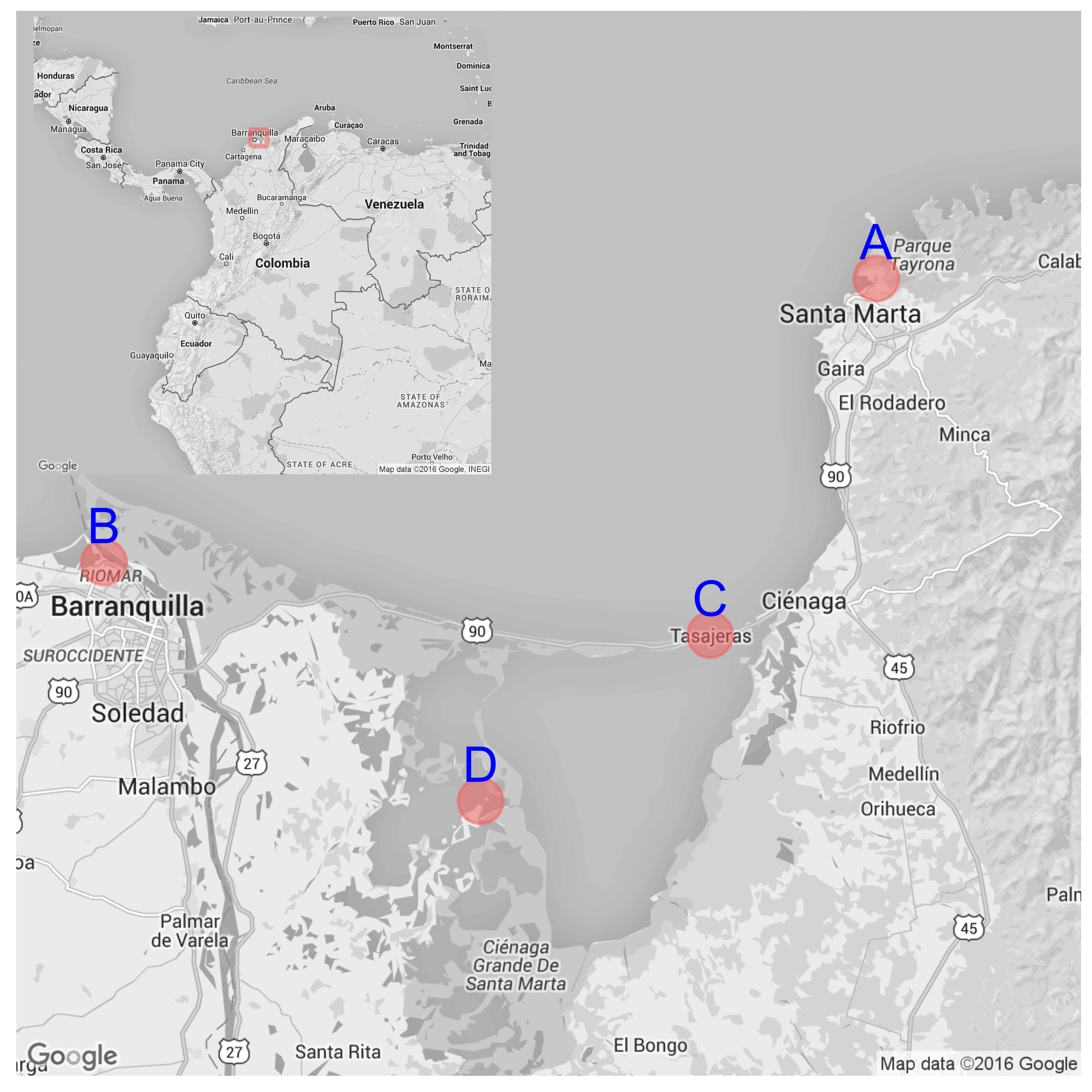
History of regime shifts
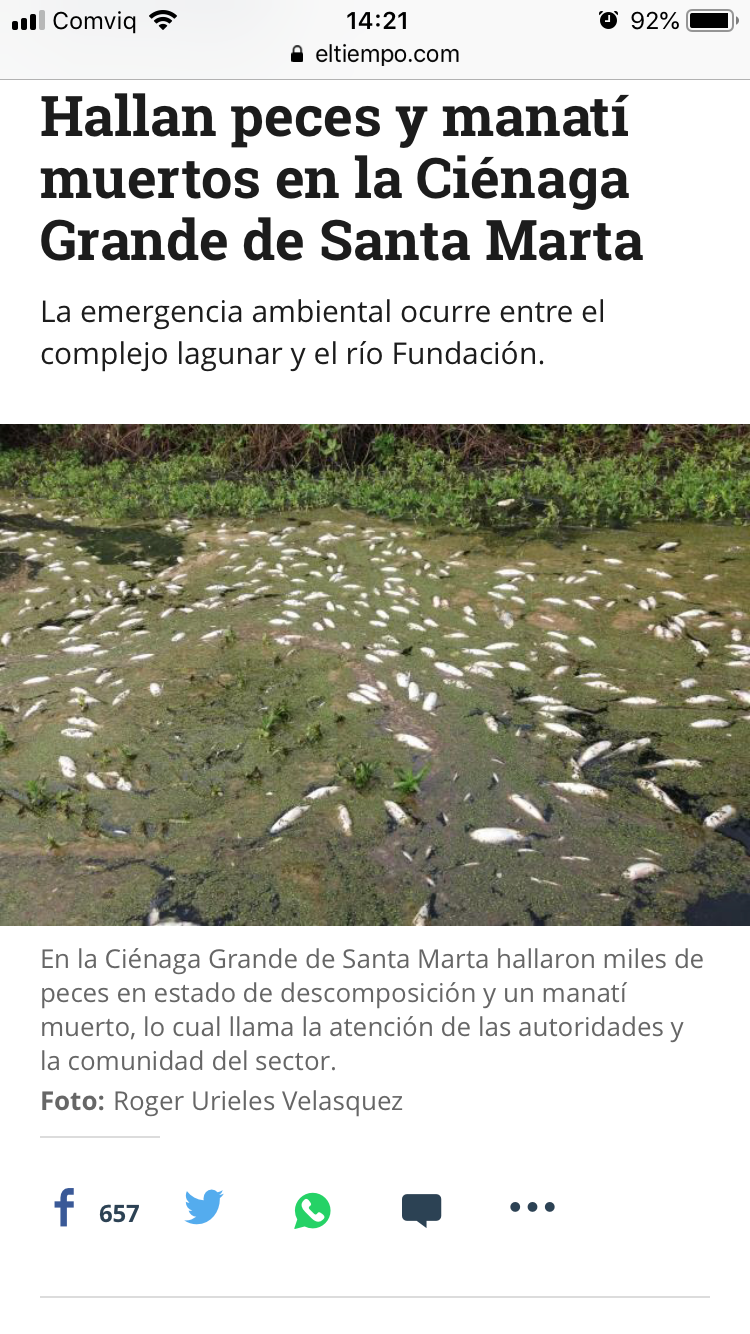

- 256 fishers groups of 4 players
- Communication allowed
- Threshod: 100% probability of climate event
- Risk: 50% probability
- Uncertainty: 10-90% probability
Treatment effects
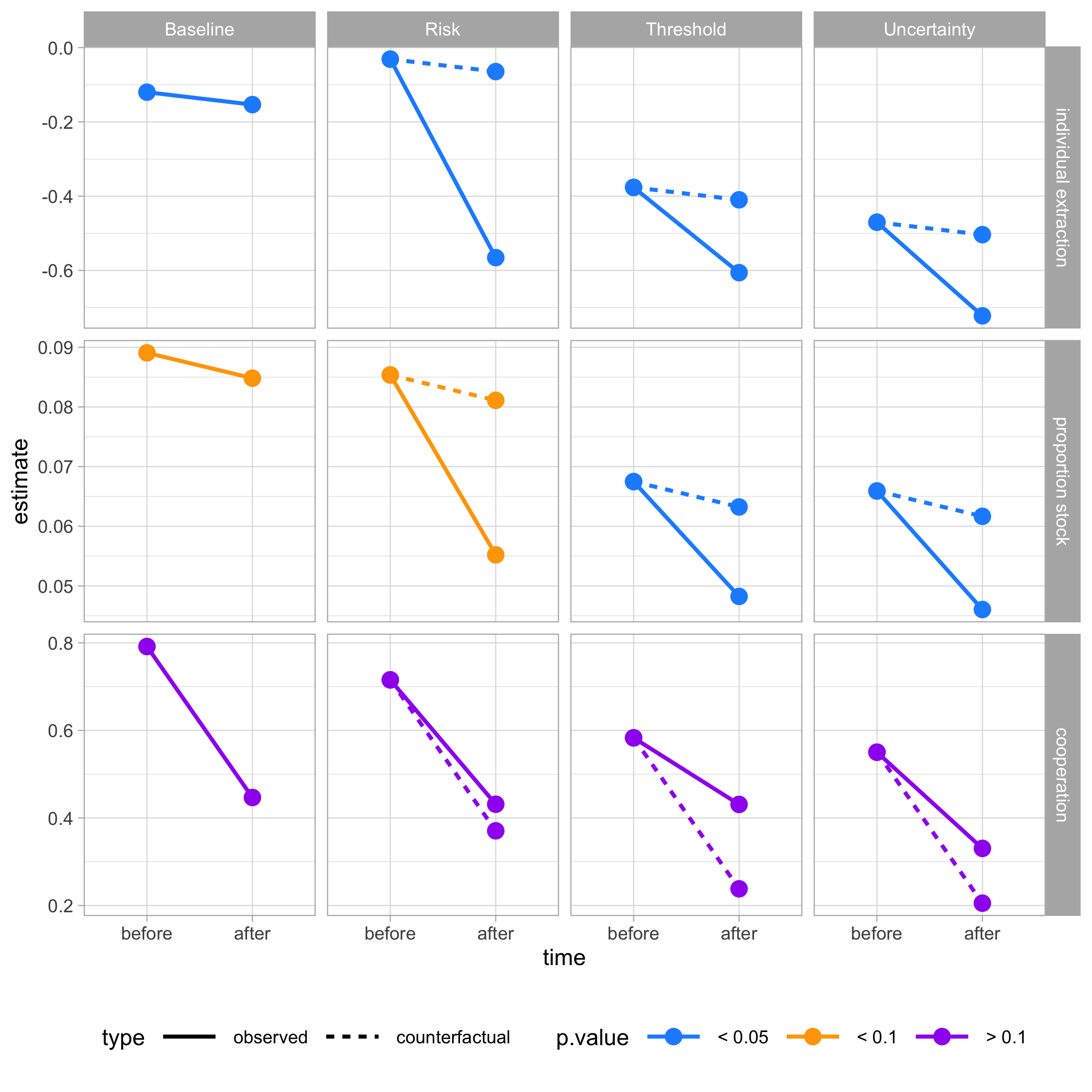
Individual extraction: \[x_{i,t}\]
Proportion of extraction: \[x_{i,t}/S_t\]
Cooperation: \[C_{i,t} = \frac{x_{i,t}}{\frac{S_t - \theta}{N}}\]
Diff-in-diff regression: \[\hat{Y_i} = \hat{\mu} + \hat{\gamma}G_i + \hat{\delta}T_i + \hat{\tau}G_iT_i\]
It’s harder to coordinate under treatments, but agreements increase the probability to coordinate and react to lower stock sizes by reducing fishing preasure. Agreements also reduce the variance of extraction and the variance of cooperation. Changes in fishing effort depends on treatments while changes in cooperation depends on context.
Lessons
- Fishermen facing thresholds fish less – they take care of the resources
- By reducing fishing effort or keeping close to the social optimal people do cooperate. However, cooperation by itself is not affected by our treatments, it seems to be driven more by personal and group dynamics.
- If the existence of threshold effects already triggers cooperative behavior in natural resource users, then communicating their potential effects on ecosystems and society is more important that quantifying the precise point at which ecosystems tip over. Specially because such thresholds are hard to observe, measure, and they change over time.
Conclusions
Ecosystems around the world are showing symptoms of resilience loss
Up to ~30% as proportion of areaBoreal forest and tundra showing particularly strong early warning signals
While elusive, resilience can be approximated from data
Critical slowing down | slow forcing: basin wider and less depth
Critical speeding up | stochastic forcing: basin narrows
Fractal dimension | loss of adaptive capacityWhen facing thresholds, cooperation does not necessarily breaks down
Rocha et al 2020. PlosONE
Tack | Gracias
Questions?
email: juan.rocha@su.se
twitter: @juanrocha
slides: juanrocha.se/presentations/IAS_resilience_loss
preprint: coming soon!
Stockholm Resilience Centre
Subscribe to our newsletter at www.stockholmresilience.org/subscribe


